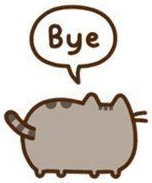http://www.huffingtonpost.com/michele-corvi/39-things-i-learned-in-my-30s_b_7779720.html
This week, on July 15, I will turn 40 and say goodbye to my 30s. I am not sure how that happened. I still think of myself as that bright-eyed 20-year-old girl, newly in love with the world, driven with ambition and hope and wonder. The years in my 30s seemed to pass with rollercoaster-like velocity -- so much faster than my 20s, although the days seemed undeniably slower with all of the trials and tribulations of raising young children. It's funny because my 30s really do seem like an unrecognizable blur of time and space. The height of my children remind me that the time did pass, but where did all of that time go?
My mother always referred to her 30s as her "sophisticated years." I wish I could say the same. Instead of feeling worldly, knowledgeable and experienced, my 30s represented a decade of child rearing, career building, an abundance of blessings and a heart full of love with too many bumps and bruises to count.
Forty is literally knocking down my door -- a milestone in so many ways; symbolic of half a lifetime lived. During this last year of my 30s, I was determined to do it all. My unofficial them song for the year was OneRepublic's "I Lived." True to form, I feel like I hit every branch on the proverbial tree of life heading into 40.
Reflecting on the past decade, here is a list of the top 39 things I learned in my 30s:
1. You do not have to have a plan for everything. Most times the best things in life are
serendipitous.
2. It is OK if some people do not like you. It makes more room for the people that
do.
3. Start applying a daily SPF to your face in your early 20s.
4. Although I thought I knew everything at 20, I really knew nothing!
5. Create a bucket list every year of different things you want to accomplish, little or
big. It's okay if you do not do all of them or if you add more as you go -- that's the
beauty of the list, you change with it.
6. Find time to read as many books as you can.
7. Paris is always a good idea.
8. Take lots of pictures every day but be sure to not let the process interfere with the
memories.
9. Write down all of the funny things your children say when they are little because you will forget them.
10. Keep a "star" file of all of the awards, accolades and good wishes you receive,
including nice emails and thoughtful cards from colleagues, friends and family.
11. Take it as a compliment when an adversary calls you vociferous.
12. Buy the shoes.
13. Take time for coffee with your friends in the morning.
14. When somebody tells you that you can't do something, push harder. Think Sly
Stallone in Rocky IV.
15. Failure is a blessing because when you fail that's when you learn.
16. Fairytales that do not survive a collision with reality need to be re-written.
17. Live it up like Jennifer Aniston and travel to Los Cabos, Mexico as often as possible.
18. Find the beauty in everything around you. It's always there.
19. Record your children's voices singing songs when they are little, because their little
voices will grow and change and the songs will become less frequent.
20. Travel, travel, travel at every opportunity.
21. Push your personal limits and try something crazy that you would never otherwise
do, like bungee jumping. You will glow with victory!
22. Sign up for a Dailey Method cycle class. Exercise is the best stimulant.
23. Drink lots of water every day.
24. Be patient with your elders. Take your grandmother to lunch. Really listen to what
she has to say because she won't be here forever.
25. Marriage and commitment is a beautiful, living work of art. Treasure and be grateful for the highs and the lows.
26. Accept that nothing is perfect. True beauty lies in the cracks of imperfection.
27. Smile.
28. If you believe it, anything is possible.
29. Surround yourself with people that believe in you.
30. It's not always about you.
31. Be happy for your friends' successes. It will make your heart lighter.
32. Treasure true friendship. You will continue to make new strong, solid friendships
throughout your life. Honor and respect them.
33. Don't be afraid to ask for what you want. Don't let rejection be a deterrent. See it as an invitation for new opportunity.
34. Sign up to run a half or full marathon at least once in your life.
35. Nothing happens by accident.
36. Be kind.
37. When an opportunity presents itself, take it.
38. "If you love until it hurts, there can be no more hurt, only more love." -- Mother
Teresa
39. You are ALWAYS stronger than you think.
One of my friends sent me a birthday note, wishing that my 40s be as wonderful as my 20s but with the added wisdom. I like that. I am approaching my 40s with an open heart full of wonder and magic, hoping that I will find some of that sophistication that my mother relished along the way.
In my 39th year, I chose to answer OneRepublic's call and when the sun goes down on July 14, I will raise my glass and own every second that this world had to give me. I saw many places and did many things. With every broken bone, I swear I lived.





